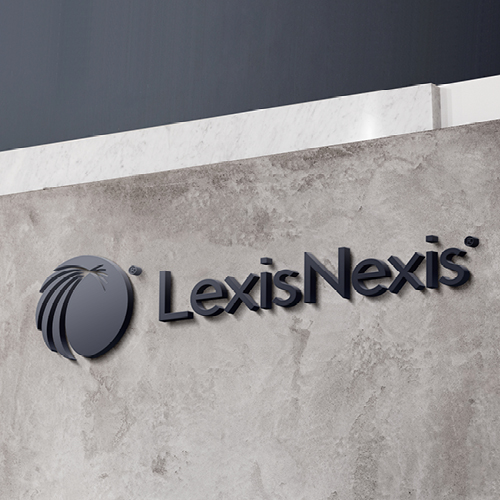THOUGHT LEADERSHIP
LexisNexis digitized the legal sector and is now using Agile methods to keep ahead of digital disruptors as Lawtech startups begin snapping at its heels. CTO David Espley tells us how continuous delivery is reshaping the global legal information firm.
LexisNexis is a company that provides legal professionals with access to over 2.5 petabytes of legal and news data within 109 billion documents. The platform provides law firms with the workflow applications for case management, customer relationship management (CRM), practice management, electronic disclosure, and identity and background verification.
“We are a global legal information business that helps legal professionals do their jobs in a successful and professional way,” says David Espley, CTO of LexisNexis, the online information firm. Part of the RELX Group, LexisNexis shares a stable with scientific database and publishing giant Elsevier.
“We focus on writing IP and getting people in who can provide great infrastructure,” he says from its London head office. Espley’s CTO role involves leading the continuous innovation and development of the LexisNexis platform of tools and content used by many of the world’s leading law firms.


Search History
LexisNexis has always had its roots in technology, beginning when academic John Horty of the University of Pittsburgh Health Law Center began investigating how technology could be used for legal information management. Little did he know his work would become the world’s largest database of legal and public record information. Horty’s initial steps inspired the Ohio State Bar Association to develop a database system, and over the following years, the technology went through a number of owners and became LexisNexis in 1972. The name is derived from the latin word for law, Lex and IS for information service.
LexisNexis was arguably the first digital disruptor for the legal sector. Before the early databases, law firms had their own librarians who’d find the case law that a practitioner needed to make their case. LexisNexis developed specialist terminals and began the digitization of law; with the advent of the browser and the Internet, LexisNexis put a library on the desk of every lawyer and solicitor as a web service.
In the 1990s, a reporter recalls visiting the internal library of the local newspaper he worked on, then with the launch of the Nexis business, a global searchable database of news content was created as an organizational subscription. Once again, LexisNexis had disrupted the market and removed the need for every newspaper publisher to have a library and archives department, allowing journalists to carry out their research at the same desk they pen their stories.
However, LexisNexis is still facing digital disruption. While lawtech may not excite venture capital headlines in the same way as Fintech and self driving cars do, research from Thomson Reuters Legal, a main competitor of LexisNexis, found that lawtech patent filings were increasing year-over-year with 579 patents filed in 2017, compared to just 99 in 2012.
LexisNexis faces disruption from not only new technology players, but also from its demanding customer base. A special report by the Financial Times newspaper reported that law firms are seeking faster and cheaper ways of providing legal services.
“The demands on lawyers for speed of response means that the days of the clients being subservient to lawyers are long gone, as the client realises they have the buying power,” says CIO Andrew McManus at global law firm Eversheds Sutherland LLP. “So for our lawyers, it’s about understanding what the value is and how that is defined and delivered, whether through technology or traditional face-to-face.”
This is something Espley, CTO of LexisNexis, is well aware of: “We are in the business of empowering legal professionals to do their job in a successful and profitable way."
“We have seen a lot of change in the focus of legal professionals and the same is true for tax professionals too. We have to enable the LexisNexis business to be fast and efficient and to delight our customers.”
“The demands on lawyers for speed of response means that the days of the clients being subservient to lawyers are long gone, as the client realizes they have the buying power.”
Continuous Case
As a software-as-a-service (SaaS) offering, LexisNexis has adopted the processes of continuous delivery pioneered by consumer technology players.
“We have moved to a continuous delivery platform with weekly updates. It’s a much better way of working and is great for building relationships,” Espley says.
“If you don’t know your customer, then you’re flying blind.” In the face of a changing marketplace, Espley’s strategy enables the global organization to be involved in constant dialogue with its customers and to be discovering their next set of demands. A service that improves and is aware of your organizational needs will be difficult to leave, no matter the appeal of newer, cheaper startup offerings.


Leadership
“To me, being a CTO is about the technology and taking interesting ideas and doing something with them,” Espley says of how CTOs in the technology service business are product and customer oriented.
“We are front and center of any program, and the technology team is completely collaborative across the business. The business domains from technology, editorial and sales work together on all the new programs we create, so it has a big reach and is very collaborative. As a result, the technology team has become data centric and outcome focused.”
“My role at LexisNexis is fascinating; our customers have a wealth of information and they want to work with us,” Espley says. The CTO joined LexisNexis in 2015 from a competitive legal information services company where he was CTO for three years. Espley is among many business technology leaders who have worked in the IT supplier industry. He also worked as a consultant for EMC where he deployed technology for major retailers. He has also taken on many leadership roles within the insurance, media and telecoms sectors throughout his career.
In addition to customers looking to work more closely with LexisNexis as a supplier, Espley has been ensuring the organization has access to the next generation of technologists. He recently set up an apprenticeship program in London and is a big advocate of getting his team to attend specialist conferences and meetups to learn new ideas from outside the legal world.
“Apprenticeships are important to get innovative thinking and the right team,” he says. LexisNexis is also planning for its next wave of upgrades that will change the way legal professionals interact with its content and services. “We are replatforming so that all of our data is in a data lake. This will mean that we can work on how artificial intelligence (AI) techniques can be used to change the extraction of our information. These technologies are really exciting.”
"To me, being a CTO is about the technology and taking interesting ideas and doing something with them."
Additional Content

Article
Scaling the Startup

ARTICLE
Agile Leadership Enables Organizations to Meet New Demands







